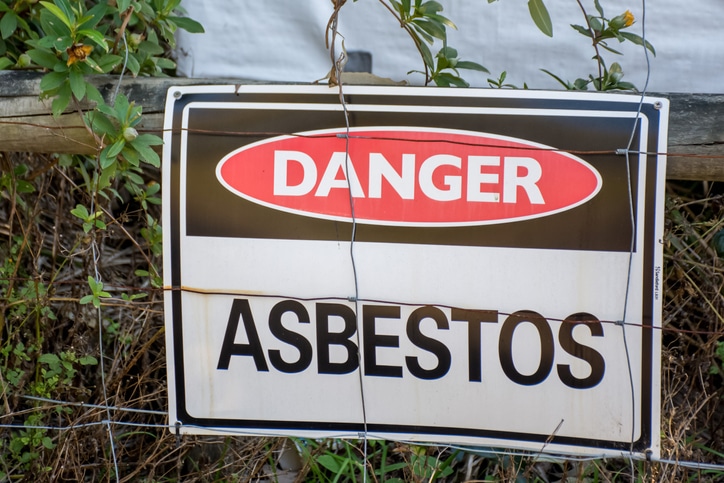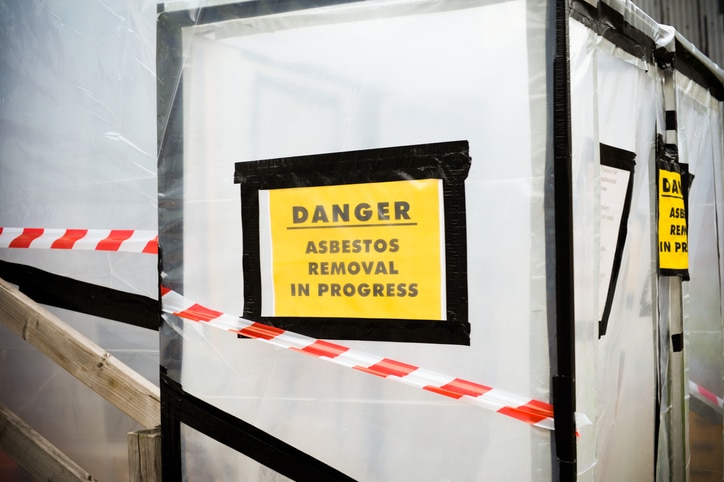If you’re a builder, then chances are you’re familiar with asbestos abatement. Asbestos is a naturally occurring mineral that was once widely used in construction due to its durability and resistance to fire and heat. However, exposure to asbestos can lead to serious health problems, including lung cancer. As a result, the use of asbestos has been banned in many countries, and builders who work with asbestos must take special precautions to protect themselves and those around them.
These days, although we don’t install asbestos products any longer, we are still constantly exposed and removing materials that are contaminated, especially from home renovations and building sites. In this blog post, we’ll give you an overview of everything you need to know about asbestos abatement, from what it is to how it’s done. We’ll also provide some tips on how to protect yourself from exposure to asbestos.

What is Asbestos Abatement?
Asbestos abatement is the process of removing asbestos from a home or other structure. Asbestos removal must be done by trained professionals who are certified with the process, and who have access to specialised equipment. The goal of asbestos abatement is to remove all traces of asbestos so that the home or structure can be safely occupied.
If you encounter asbestos in a job site or home renovation, it’s imperative to call a local business such as Alberta Safety & Environmental Services to assist you in the removal process.
Why is Asbestos Removal Necessary?
Asbestos removal is necessary because exposure to asbestos can lead to serious health problems, including lung cancer. When inhaled, asbestos fibres can lodge themselves in the lungs and cause inflammation and scarring. This can lead to difficulty breathing, coughing, and even death. Asbestos exposure is also linked to mesothelioma, a rare but aggressive form of cancer that affects the lining of the lungs or abdomen.
That’s why hazardous materials assessments are vital to the safety and health of any jobsite. Reducing the harm or exposure to asbestos for your employees or customers is imperative and may even save lives.
How is Asbestos Removed?
Asbestos removal must be done by trained and certified professionals using specialised equipment. The first step is to identify all areas where asbestos may be present through a hazardous materials assessment. Once all potential sources of exposure have been identified, the area will be sealed off so that no one can enter except for those who are properly trained and equipped.
Next, the area will be wetted down with water so that dust generated during the removal process can be contained. Finally, the asbestos-containing materials will be removed using negative air pressure machines and HEPA filtered vacuums. Once all the asbestos has been removed, the area will be cleaned and inspected to ensure that no traces of asbestos remain.
Final Thoughts
Asbestos abatement is a necessary process for any home or structure that contains asbestos. Exposure to asbestos can lead to serious health problems, including lung cancer, and the removal must be done by trained and certified professionals using specialised equipment.
If you think you may have been exposed to asbestos, it’s important to see a doctor as soon as possible so that you can get treated and avoid any further exposure.
Alberta Safety & Environmental Services (ASE Services) is one of the most reputable providers of Hazardous materials assessment and hygiene inspection services—including asbestos, lead, mould, mercury, and silica detection, as well as industrial hygiene testing for grow ops and other facilities.
With a background in Alberta’s Occupational Health & Safety Commission and professional project management skills, our qualified staff can provide reliable handling of air quality and industrial hygiene from initial industrial inspection all the way to remediation programs. Whether just for a permit, or in-depth air quality control, we can help. Feel free to reach out and secure air quality and hygiene requirements for your building.
